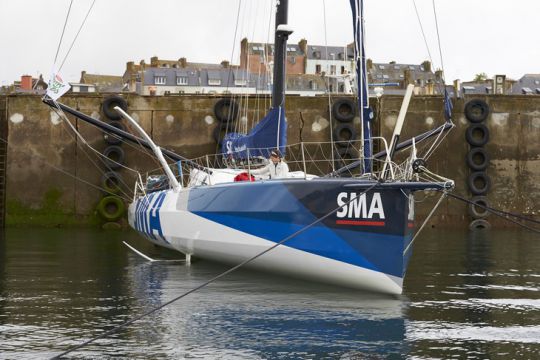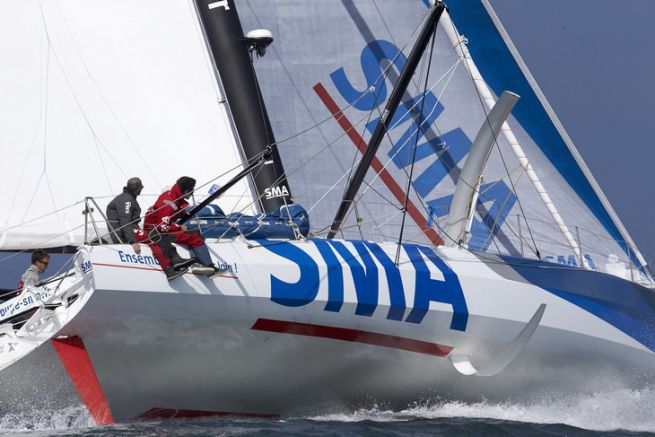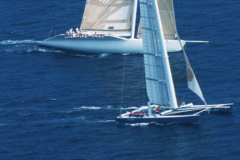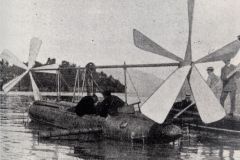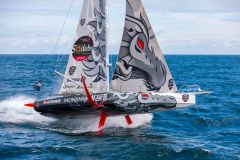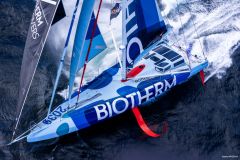Inconclusive tests
After eight weeks of testing the foil installed on the starboard side, in all possible conditions, it appears that SMA will finally not be equipped with these lifting appendages for the Transat Jacques Vabre. For a month and a half, the monohull was tested in an "asymmetrical" version: a daggerboard on the port side and a foil on the starboard side, a process that enabled data to be collected in both configurations and compared.
Even if they accentuate the de-measurement and offer phenomenal acceleration capacities for all the boats, including monohulls, the experiment carried out by Paul Meilhat and the Mer Agitée team was not totally convincing. To be exact, it was the profile of the foil, created in 2015, which did not win the support.
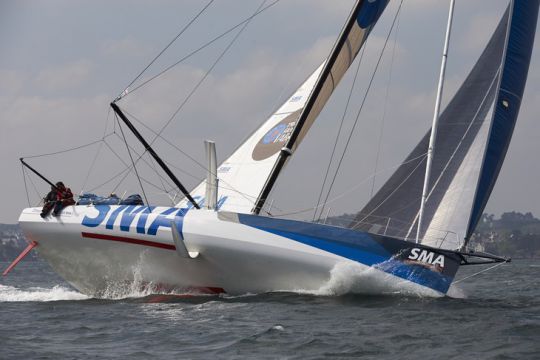
"This foil was designed at a time when all boats were starting to design foils and everyone was groping around.. explains Marcus Hutchinson, the ADM Ocean Racing Program Director. We thought we'd try something, but with the constraint of not modifying the boat."
"The foil didn't prove that it brought performance, but it was a very interesting experience. Throughout the training phase, we set up a study process that allowed us to learn a lot about the boat's behaviour. This process was also valuable for the technical team, who were able to note down a lot of information for the implementation of the modifications to the daggerboard wells and systems" explains Paul Meilhat.
Paul Mailhat - who will be racing the Transat Jacques Vabre alongside Gwénolé Gahinet - will therefore be doing so without foils. And the decision by the company SMA to commit to working alongside the skipper for the next Transat Jacques Vabre and the Route du Rhum until 2018 (and perhaps not until the Vendée Globe) has also contributed quite a lot to the decision to abandon the idea of foils for the next races.

A hybrid foil
Indeed, in 2015, the SMA team, via the company Mer Forte and Michel Desjoyeaux, launched a series of studies that led to the construction of a foil. This foil could be used without having to modify SMA's structure. Normally, the installation of foils on a 60-foot IMOCA 60-footer of the previous generation involves making structural modifications (foil well, reinforcement of the mast and hull bottom) to compensate for the increase in the boat's dynamic righting torque generated by these load-bearing plans.

This "hybrid" foil could therefore be inserted into the existing daggerboard well, thanks to a set of specific shims.
"What we're testing is a middle way. This foil does not look like the appendages already seen on the boats in the last Vendée Globe. The layout of the element that crosses the side of the monohull (the shaft) is relatively vertical. To put it simply, this system is a compromise between daggerboard and foil: the anti-drift effect is preserved upwind, and the curved end of the foil (the tip) operates its lifting power downwind" explained Michel Desjoyeaux last March.
